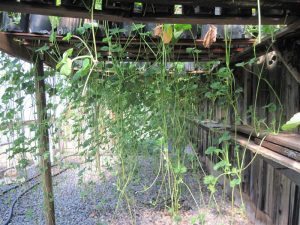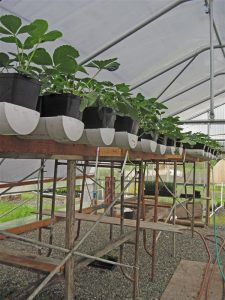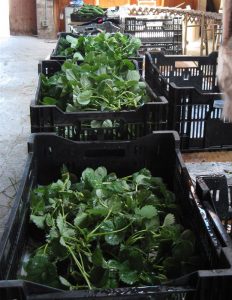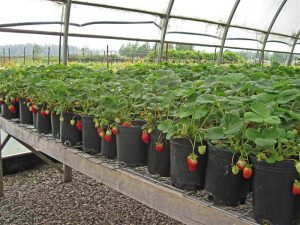When farmers of organic strawberries in the Northwest plant in fall for the next year’s harvest, they use plugs purchased and shipped from suppliers in southeast United States. Now, a recent grant from The Community Food Coop Farm Fund, supports a trial by Cloud Mountain to produce certified organic strawberry plant plugs for fall planting.
In trials by Washington State University and Cornell University, fall-planted strawberry plugs — small plants with roots and soil intact, planted in plastic cells — had higher yields of larger strawberries than bare-root strawberries planted in spring, the customary season for bare-root planting. While bare-root strawberries grow into healthy plants, their yields can be 20 percent less with smaller-sized fruit than plants started from plugs in the fall. Yet, the cost of shipping plugs from the East Coast, plus the cost of any losses incurred to the plants in transit, can make plug prices nearly three times greater than the cost of bare-root plants purchased locally.
- Last year’s strawberry propagation trial.
- Strawberry Scaffolds
- Harvested Runner Plantlets
- Second year mother plants now grown for fruit
Cloud Mountain is working with several varieties of day-neutral strawberries, which are not affected by amount of daylight they receive, a benefit during the short days of winter. They produce fruit over a longer period of time, from late spring through fall, with the potential to yield a greater income to farmers than June-bearing plants.
Last year, our intern Riley started an experiment on strawberry propagation. Strawberry plants send out runners with small plantlets, which can be rooted to form new plants. When the plants are in the ground, each mother plant will send out runners with just a few rootlets, which then can root to form new plants. Take those plants and suspend them, and the plants will form longer runners with many more plantlets. The plants last year were suspended about 4.5 feet in the air. Each runner produced about 8 plantlets.
Our expectation is that by suspending the plants higher in the air, we will get more plantlets per plant. To make the project economically viable, we calculate we need 20-25 runner plantlets per mother plant.
To complete the process, late this summer we will harvest the runners, then stick the plantlets into plug trays to root. By mid September, they are rooted and ready to plant.
Because we are interested in the full economics of theproject, we are also trying to get a fruit crop on last year’s mother plants. They were already in containers, so it is mostly a process of water and fertilizer. Both the plants for propagation and the second year plants are being grown with organic methods. Strawberry plugs produced will be certified organic.






Appreciating the time and effort you put into your site and detailed information you provide. It’s great to come across a blog every once in a while that isn’t the same unwanted rehashed material. Great read! I’ve saved your site and I’m adding your RSS feeds to my Google account.
I want to to thank you for this great read!! I definitely enjoyed every little bit of it. I have you book marked to look at new stuff you post|
Hello,
I’m just coming across this post as I’m searching for info on growing out my own strawberry plants for my farm, since the only source I can find for organic bare root strawberries cost $0.90/plant for orders over 1000 plants. I see you were doing this experiment over 7 years ago. I hope it’s not too late to ask…How did it end? Were you able to get the number of runners you needed by raising the plants higher? What was your success rate with getting the runners to root? Ive experimented with this and have had terrible results getting the runners to root, so instead set out trays beside the mother plants and rooted the runners while still attached. This worked great, but was too labour intensive to justify it.